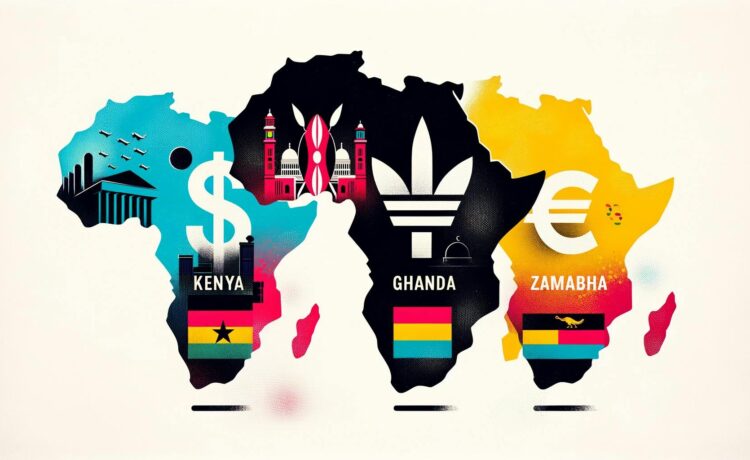What’s going on here?
African currencies are seeing varying outcomes amid different economic stresses, with Kenya showing stability, Ghana and Zambia facing challenges, and Uganda on an uptrend.
What does this mean?
The Kenyan shilling is expected to remain stable due to balanced demand from fuel importers, manufacturers, and offshore investors targeting local bonds. This stability is bolstered by Kenya’s central bank, which is actively buying dollars to maintain currency balance. Conversely, Ghana’s cedi is under pressure from ongoing foreign-currency demands, particularly from the energy and manufacturing sectors. Despite efforts from the Bank of Ghana, Absa Bank Ghana and Stanbic Bank Ghana predict continued strain as demand intensifies. Meanwhile, Uganda’s shilling is set to strengthen with increased dollar inflows from coffee exporters and interest from offshore investors, especially with the Bank of Uganda’s upcoming auction of 990 billion shillings in Treasury bonds. Zambia’s kwacha continues to struggle with persistent hard-currency demand, as noted by Zambia National Commercial Bank.
Why should I care?
For markets: A regional currency rollercoaster.
Currency stability in Kenya offers a sense of security for investors, enabling predictable market conditions. However, the sustained pressure on Ghana’s cedi could signal potential inflationary risks and economic instability, necessitating cautious market engagement. Zambia’s kwacha strain highlights the importance of monitoring hard-currency demands in investment strategies, while Uganda’s strengthening shilling presents opportunities in the upcoming Treasury bond auction.
The bigger picture: Economic diversity at play.
These currency trends underscore the varied economic conditions across African nations. Kenya’s interventions for stability, Ghana’s struggle with sector-specific foreign-currency demands, and Uganda’s boost from export inflows exemplify the dynamics shaping regional economies. As countries like Zambia grapple with hard-currency demand, understanding these macroeconomic factors offers deeper insights into Africa’s evolving financial landscape and its global economic interactions.

















